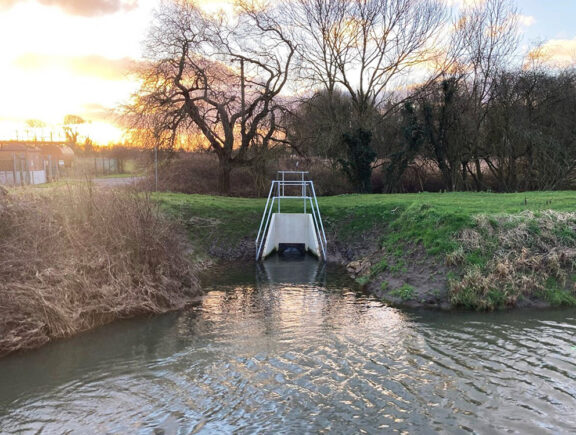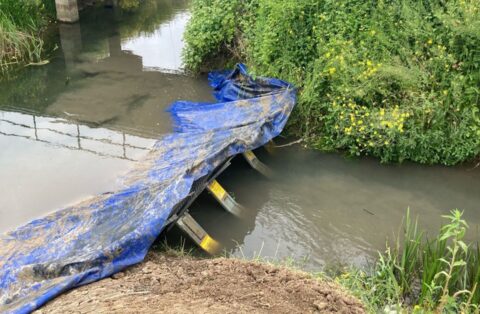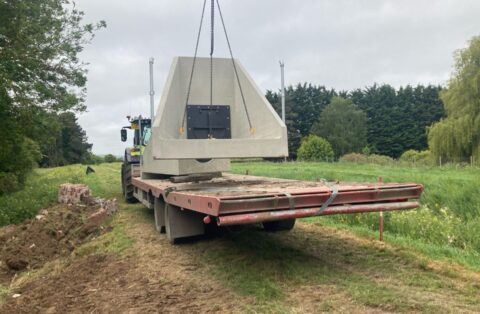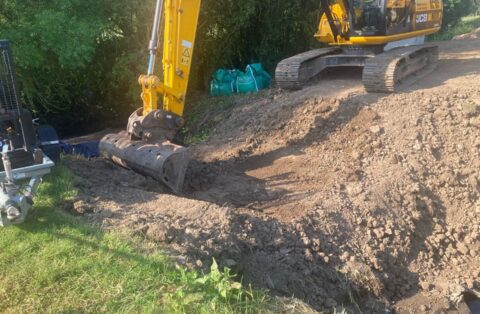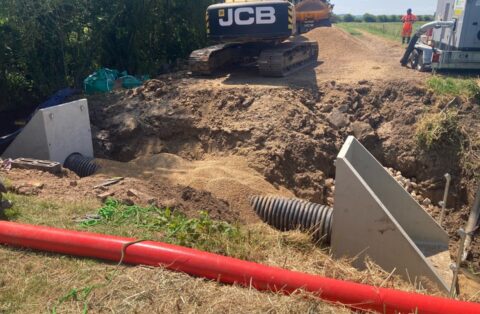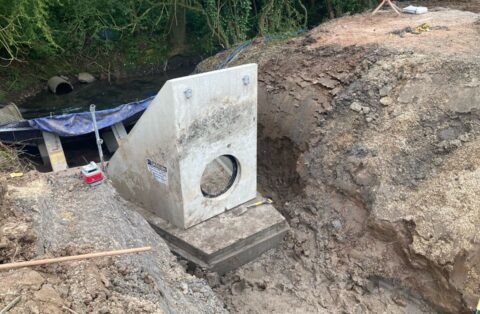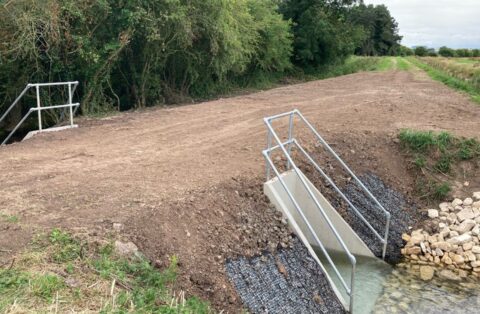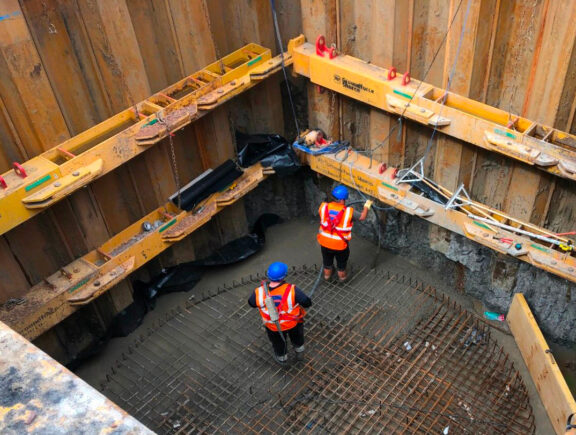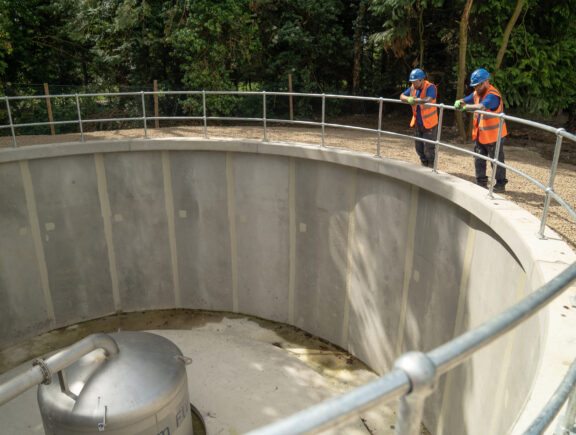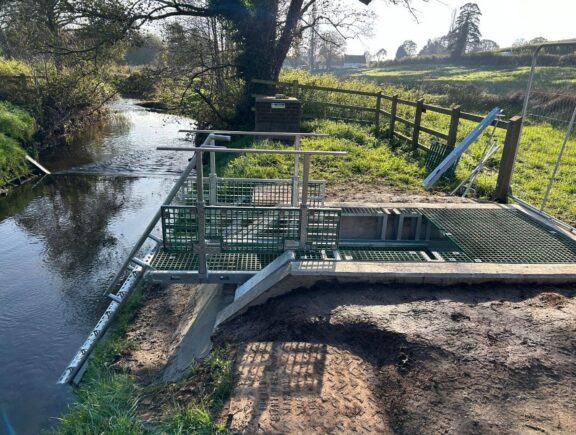The inlet and outlet of the culvert were dammed off using Portadams. A controlled fish rescue was undertaken before the working area was dewatered using submersible pumps. Water from the dyke was over-pumped into the Tetney Drain for the duration of the works.
Following a method statement co-produced with the client, the team located the underground pipework before reducing the height of the embankment using an excavator, saving the spoil for re-use. The existing headwalls and pipework were removed, and waste material was transported away for correct disposal.
A semi-dry concrete foundation was created on which to install the new structures. New pre-cast concrete headwalls were chosen for the design as they significantly reduce the time, cost and carbon output of the project. These were carefully lowered into position using a large excavator and installed as per the design. Pipes were then re-installed, and the headwalls were butted back into position before being sealed.
Additional structural support was provided by installing Rock Rolls at the sides of each headwall up to ground level. Pitching stone was placed in front of the headwalls on both sides to help prevent future erosion. The culvert was then re-covered using the previously excavated excess material and benched into the existing defence in 150mm layers before being compacted using a remote-control roller.
Finally, the embankment was brought back to a height to correspond with the surrounding terrain, and general re-instatement work took place. The area was then seeded with a grass mix approved by the client, selected based on its suitability for the area’s environment, surrounding vegetation, and local wildlife.
